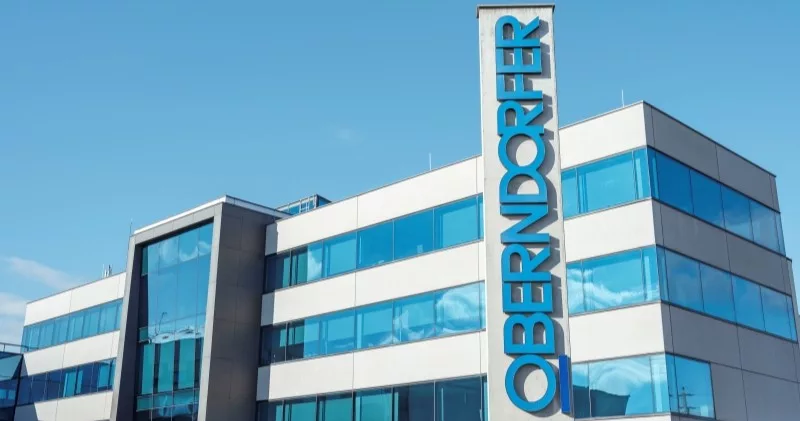
Sustainable Construction Software
Sustainable construction software is essential for championing sustainability in the AEC industry. It allows for accurate resource management, less waste, and the promotion of data-driven decisions that prioritize energy efficiency and low-carbon materials. With collaborative platforms streamlining communication, HSEQ managers can rest assured that sustainability goals are maintained across all stakeholders. In addition, these solutions make monitoring sustainability data easier, which helps teams become more environmentally conscious, use materials better, and include renewable energy in their plans.

Sustainable Construction Software to Drive Your Business Forward
RIB’s solutions for sustainable construction help companies achieve more environmentally friendly and socially responsible project outcomes. With real-time data analytics and resource tracking, RIB enables companies to make informed decisions that reduce waste, optimize material usage, and minimize environmental impact. Using technologies like digital twins and advanced project forecasting, businesses can more closely align sustainability goals by taking proactive measures to reduce energy usage and carbon emissions. Furthermore, RIB’s cloud-based solutions promote collaboration, which in turn increases openness and transparency in environmental commitments. Read more about our construction sustainability software offerings below.
RIB CostX
RIB CostX offers sustainable construction tools that allow for both cost estimating and embodied carbon accounting. It creates a world-leading 6D BIM solution, enabling quantity surveyors and estimating businesses to lead the way in sustainability.
RIB CostX’s embodied carbon software lets users estimate embodied carbon across the entire building lifecycle including operation, maintenance & end of life phases. As well as calculating the project’s total carbon output, the proportion that each component contributes to this can also be determined.
- Compare baseline estimated embodied carbon to actual as-built totals based on real supplier EPDs to show carbon reductions.
- Present customized reports with carbon and cost in a wide variety of formats and styles tailored to your corporate standard.
- Support data from various sources including Building Transparency’s EC3 library.

RIB 4.0
RIB 4.0 is sustainable construction software that incorporates everything from planning right through to execution via 6D modeling and interconnected processes, optimized material usage, reduced waste, and shortened transportation routes. It promotes sustainable actions through variant studies and simulations, and sustainable processes through BIM material documentation. RIB 4.0 also enables the calculation and quantification of CO2 values for resources.
By digitizing every aspect of a building’s lifecycle, RIB 4.0 ensures projects are not only completed within budget and on schedule but also uphold high-quality standards, while significantly reducing your carbon footprint.
- Variant studies and simulations unlock short- and long-term sustainability opportunities.
- BIM material documentation in reliable as-built models for dismantling and cradle-to-cradle processes.
- Calculation and quantification of the CO2 values of utilized resources.

What Our Clients Say
Sustainable Construction Software FAQs
Sustainable construction software helps companies track and mitigate the environmental impact of their projects. With features for carbon tracking, material selection, and more, sustainability can be achieved from the planning to the operational stages of the building.
These solutions help maximize energy efficiency and resource management by providing powerful features to identify renewable materials, energy-efficient sources, and green construction methods. They also help integrate sustainable construction principles across the project’s entire life cycle, boosting productivity, efficiency, and collaboration.
It is no secret that the AEC industry is one of the biggest polluters in the world. If we want to reach the goal of net zero carbon emissions by 2050, we must take action and use technology to integrate green practices into all project stages. To do so, construction sustainability software is key. Some benefits of these solutions include:
- Reduce the project’s environmental impact: By providing tools to monitor resource consumption, waste generation, and the carbon emissions of the different activities, companies can get a 360-degree view of the project’s environmental impact and make important decisions to mitigate it. This increases the efficiency and success of green initiatives as decisions can be based on data instead of intuition.
- Improve cost efficiency: These tools provide powerful features to optimize resource management in construction projects. They allow users to analyze and choose sustainable materials and energy sources that can lower operational costs and make the entire operation more profitable. Plus, they allow them to evaluate the financial impact of different decisions to make the most cost-effective ones.
- Enhance collaboration: By centralizing all project activities and processes in a single place, these solutions help boost collaboration and communication between stakeholders, ensuring everyone is on the same page about any new developments or decisions.
- Streamline regulatory compliance: These solutions also help maintain regulatory compliance by offering reporting capabilities and automating document management. This is invaluable, as compliance with regulations is a fundamental aspect of the success of green building initiatives.
As sustainability becomes increasingly important in the building sector, more and more solutions emerge to help in project management, resource optimization, planning, and collaboration. That said, not all solutions fit the needs of every business. Companies should research to find the best solution for their needs and objectives. However, there are some key functionalities any platform of this kind should offer. These are:
- Simulation: Thanks to powerful 6D BIM technology that mixes time, cost, and sustainability data, these solutions allow users to simulate different scenarios in terms of energy and material efficiency. This way, they can evaluate the environmental impact of the different decisions and choose the one that best aligns with sustainability goals and the project budget and schedule.
- Carbon accounting: Another invaluable feature these solutions should offer is the ability to estimate, track, and mitigate the project’s carbon emissions. RIB CostX, for instance, offers a carbon calculator that allows users to estimate the emissions across all project stages and compare them to as-built data.
- Data management: Data is key to making sustainable decisions in construction projects. Therefore, the software you invest in should offer robust data management features to give you a 360-degree view of all aspects of the project. For example, RIB 4.0 offers an enterprise control tower module that gives users a complete performance overview in terms of cost, schedule, resources, quality, and safety, ensuring decisions can be made with the full picture in mind.
- Cost estimation: Another relevant feature these solutions should offer is cost estimation to assess the financial implications of eco-friendly design and material decisions. This can also help compare traditional materials with sustainable alternatives to ensure the budget is respected while considering green decisions.
- Regulatory compliance: Finally, the best software for sustainable construction should help users comply with all regulations and inform them about any new developments. Additionally, it should offer robust document management functionalities to ensure that all relevant documentation, such as permits and reports, is up-to-date and easily available.
Sustainable construction software helps address waste management and resource efficiency across the entire project. It first gives companies the necessary tools to estimate the impact of different material choices to help them better align with sustainability goals. This applies to the type of materials and also to the quantities needed, helping to avoid over-sourcing and excess inventory while contributing to waste reduction.
During the project, they also help monitor material usage in real-time, helping spot areas of potential waste and mitigate them. After the project is completed, these solutions also help manage waste by evaluating which materials can be used for another project and which should be taken to a specialized recycling or waste management facility.
Sustainability is a huge topic in modern construction, not only because companies are starting to care about the environment but also because regulators are demanding them to do so. Sustainable building solutions help them mitigate the numerous challenges that come with the process. Some of these challenges include:
- Mitigating waste regarding materials, water, energy, and other resources
- Lack of collaboration between different stakeholders, which leads to costly errors and more waste
- Compliance with sustainability regulations while maintaining quality and cost-effectiveness
- Achieving responsible sourcing in complex supply chains
- Engaging stakeholders and motivating them to join the commitment of designing, building, and operating greener structures.
The powerful functionality of data analytics, carbon accounting, resource management, and more set the perfect tone for companies to successfully take charge of their environmental responsibilities.
Yes! Professional construction sustainability tools allow you to track and mitigate carbon emissions across the entire project lifecycle, including operation, maintenance, and end-of-life. Our professional solution, RIB CostX, offers robust carbon estimating software that helps estimate embodied carbon from the early stages of the project, compare it to as-built totals based on real supplier EPDs, and compare reductions in customizable reports.
Plus, CostX offers its users the possibility of accessing a range of embodied carbon rate libraries, like EC3, to determine the carbon emissions of different materials, equipment, energy sources, and other resources. This allows the quantity surveyor to successfully assess the environmental consequences of different choices.














